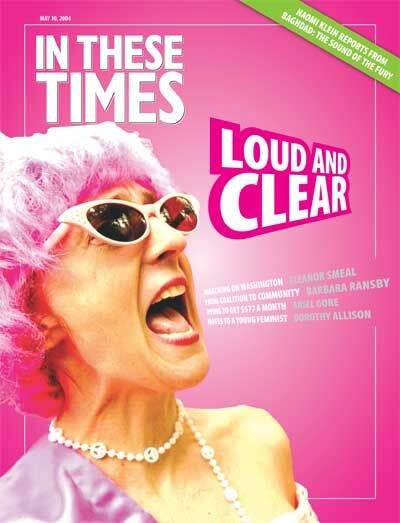The most infuriating thing about David Brooks isn’t his smug tone or the way he dismisses critics as anti-Semites from “Planet Chomsky.” What’s truly maddening is that liberals keep lapping up his thinly sourced pop sociology.
Brooks has been embraced as “the conservative guy who can talk to liberals.” The former Weekly Standard scribe holds down a column at the New York Times, and his commentaries regularly appear on PBS and NPR. Brooks may be working off the same set of talking points as the Wall Street Journal or Fox News, but he’s a kindler, gentler neocon.
Brooks’ specialty is divining political and societal trends based on where we shop and eat, whether in his book-length exploration of “Bobos” (short for “bourgeois bohemians”) or his recent paean to the nation’s sprawling exurban “utopia.” To Brooks, “material things are shot through with enchantment.” You are what you buy.
Brooks’ best-known article is his December 2001 Atlantic Monthly cover story on the chasm between “Red” and “Blue” America — the divided nation illustrated on election-night maps showing which states voted for Bush or Gore in 2000. Shuttling between his home in a “Blue”-blooded Maryland suburb and Franklin County, Pennsylvania — a Red county in a Blue state — Brooks discovered that it’s hard to spend $20 on a meal in Red America, and nobody there thinks Woody Allen is funny.
From this “research,” Brooks concludes that the humble, Bush-loving Red states are all country music and Christmas-ornament stores. The snobby Blue states, with Ivy League stickers on their Volvos, prefer performance art and big government. But Brooks found no evidence of a class divide in this country. His proof? Asked whether they believed America is split between haves and have-nots, the Reds said yes, but “as the conversation continued, it became clear that the people saying yes did not consider themselves to be among the have-nots.”
Despite its dubious premise, Brooks’ article has taken on a life of its own. In April, Philadelphia Magazine devoted more than 3,000 words to discrediting the piece. Author Sasha Issenberg retraced Brooks’ footsteps in Franklin County, proving that one can spend more than $20 at Red Lobster and even rent Annie Hall. But Issenberg doesn’t dispute the flimsy notion of the Two Americas itself. He even favorably quotes conservative analyst Michael Barone’s description of a divided nation: “One is observant, tradition-minded, moralistic. The other is unobservant, liberation-minded, relativistic.”
Unfortunately, Issenberg is not alone. Democratic pollster Stanley Greenberg — a standard-bearer for the “populist” wing of the party — wrote a book titled The Two Americas, in which he sees a nation “ever more polarized on cultural issues.” Like Brooks, Greenberg puts a lot of weight on consumer purchases and preferences. Greenberg divvies up the electorate into narrow categories with cute nicknames. In the “Tampa Blue” region, voters fly the flag, eat at Hooters and enjoy “Friends.” In “Heartland Iowa,” he finds mainline Protestants and ESPN enthusiasts but no “West Wing” fans. Over at “Eastside Tech,” voters drive foreign cars, drink frappucinos and visit eBay. This type of analysis, as critic Chris Lehmann writes, suggests “our political system is not in the throes of acute demographic or ideological polarization so much as a state of imaginative bankruptcy.”
The Two Americas debate ignores the half of the country that didn’t vote. And rather than fretting that Ralph Nader is “stealing” votes, Greenberg’s party might consider why so few people are willing to identify themselves as Democrats. That’s a disturbing trend — especially given much of Greenberg’s data suggest that swaths of the country support issues once defined as Democratic, such as health care, education, the squeezing of the middle class and growing income inequality. Among the traditionally strong Republican issues, only “the breakdown of the American family” and “rogue nations armed with weapons of mass destruction” are deemed major problems by a majority of voters. Less than a fifth of voters found “outdated government regulations” and “high taxes” to be “extremely serious.”
Yet year after year, the have-nots in Red America vote for a party that acts against their interests. It’s not simply a matter of culture, as Thomas Frank explains in the April issue of Harper’s. “Cultural anger is marshaled to achieve economic ends,” he writes. “The leaders of the backlash may talk Christ, but they walk corporate.”
The Republicans need PR flacks like Brooks to distract voters from their record. Consider Red America’s gains from the culture war, as described by Frank:
Vote to stop abortion; receive a rollback in capital-gains taxes. Vote to make the country strong again; receive deindustrialization. Vote to screw those politically correct college professors; receive electricity deregulation. … Vote to strike a blow against elitism; receive a social order in which wealth is more concentrated than ever before in our lifetimes.
Now if we could only fit that on a bumper sticker.







